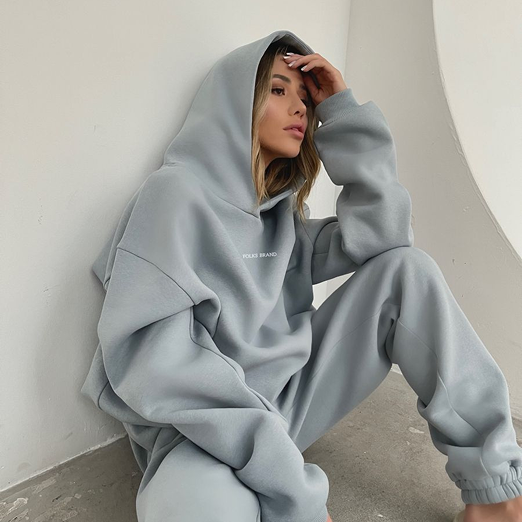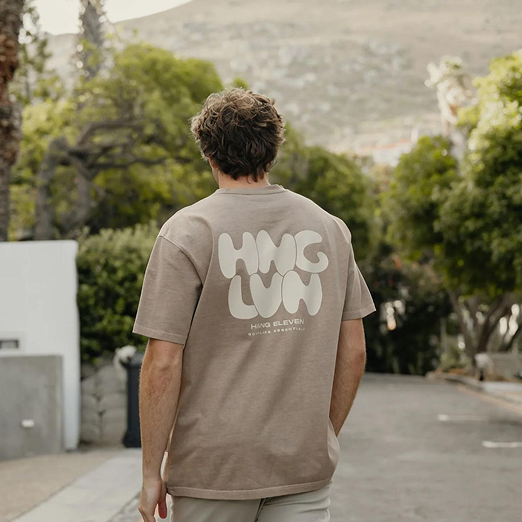There was a time when the hoodie was just… a hoodie.
A simple sweatshirt with a hood — functional, unremarkable, and often misunderstood.
But over the last two decades, it has evolved from a symbol of anonymity and rebellion into a marker of quiet luxury, creative energy, and emotional refuge.
Today, the hoodie is no longer just a garment — it’s a statement of identity.
A reflection of how we live, create, and express softness in a world that rarely allows it.
1. The Humble Origin
The hoodie’s story begins not in the atelier, but in the factories of 1930s America.
It was born out of necessity — a piece of workwear designed by Champion for laborers in freezing warehouses.
It wasn’t fashion; it was function.
The hood protected from the cold, the thick cotton fleece offered durability, and the fit allowed mobility.
From there, it made its way into sportswear, becoming a staple for athletes and students.
But its quiet strength — its unspoken defiance — was waiting to be discovered.
2. From Rebellion to Culture
By the 1970s and 80s, the hoodie had found its tribe.
In New York, it became the unofficial uniform of hip-hop culture.
Breakdancers, graffiti artists, and emcees wore it as armor — a symbol of power, anonymity, and self-expression.
In California, skaters and surfers adopted it for the same reason: comfort and individuality.
It wasn’t polished, but it was real.
Then came Hollywood — the moment Rocky Balboa sprinted up the steps in a gray hoodie turned this humble garment into a symbol of determination and grit.
And later, Steve Jobs and Mark Zuckerberg redefined it again — as the uniform of innovation and focus.
No distractions, no pretense — just work, passion, and vision.
The hoodie became culture.
3. The Fabric of Emotion
What makes a hoodie powerful is not just its silhouette — it’s how it feels.
The heavyweight fleece.
The brushed interior that touches skin like memory.
The comforting weight on the shoulders that grounds you when the world feels too fast.
It’s more than comfort — it’s emotional architecture.
We wear hoodies not only to stay warm, but to feel safe, to cocoon ourselves in a world that demands exposure.
When life feels overwhelming, a hoodie is like a soft exhale.
It’s clothing that listens.
4. The Heavyweight Renaissance
Around the mid-2010s, something interesting happened:
Designers began to rediscover the hoodie — not as an afterthought, but as a masterpiece in itself.
Brands like Fear of God, Ader Error, Pangaia, and Trendytroop turned it into an object of desire.
Every gram of cotton, every stitch, every seam was reconsidered.
The result? The heavyweight hoodie — thick, structured, dignified.
It draped differently, it photographed differently, it felt different.
No longer a symbol of rebellion, it became a symbol of self-assurance.
To wear a premium hoodie today is to say:
“I know who I am — I don’t need to prove it.”
5. The Science of Weight
Why do heavyweight hoodies feel so special?
It’s about density.
A 500-700 GSM (grams per square meter) cotton fabric changes everything.
It doesn’t wrinkle, doesn’t cling, doesn’t collapse.
Instead, it hangs.
Like architecture for the body — clean, structured, stable.
Luxury hoodies are sculpted, not sewn.
Their shape holds, even after years of wear.
It’s paradoxical: the heavier the fabric, the lighter the presence.
Because when your clothing supports you — you don’t have to perform.
6. The Symbol of Stillness
In an age defined by chaos, the hoodie offers stillness.
There’s something almost meditative about pulling the hood up — a ritual that creates silence, even in noise.
It’s why writers, coders, and artists often find themselves working in hoodies.
It’s not laziness — it’s focus.
The hood is a boundary, a way to turn inward, to disconnect from expectation.
That’s why even in the world of high fashion, the hoodie remains powerful:
It represents privacy in public.
7. The Genderless Comfort
The hoodie, like the oversized tee, transcends gender.
It’s universal, yet intimate.
When someone borrows your hoodie, they’re not borrowing fabric — they’re borrowing energy.
It’s warmth shared, protection passed on.
That’s why hoodies hold sentimentality — they absorb memories, smells, touch, moments.
No other garment feels quite as personal.
A hoodie can be both armor and embrace.
It’s a love language made of cotton.
8. Craftsmanship Meets Comfort
The rise of the premium hoodie has created a new design discipline: comfort engineering.
Every millimeter matters.
The drop of the shoulder, the length of the ribbed cuff, the density of the drawstring — each element is intentional.
High-end brands obsess over these details because they know:
Comfort is not casual — it’s crafted.
A Trendytroop heavyweight hoodie, for instance, balances softness and structure with architectural precision.
It feels familiar yet refined — effortless but deliberate.
That’s what separates fashion from fast fashion — intention.
9. Streetwear to Sartorialism
Streetwear and luxury are no longer opposites — they’ve merged.
The hoodie sits comfortably next to tailored trousers, fine jewelry, and leather loafers.
It’s not rebellion anymore — it’s balance.
The new luxury doesn’t shout; it whispers.
And the hoodie is its voice.
Even on runways — Balenciaga, Ami, Jacquemus, The Row — the hoodie stands tall, styled under blazers or layered over crisp shirts.
It’s not about irony anymore. It’s about evolution.
10. The Psychology of Comfort
Comfort is not indulgence — it’s resilience.
We’re drawn to hoodies because they let us drop the armor for a moment.
They remind us that we can be soft and still strong.
This is especially true for modern masculinity — where vulnerability is becoming a new form of confidence.
A man in a hoodie today isn’t hiding — he’s at peace.
He’s choosing authenticity over performance.
11. The Hoodie as a Uniform of Creation
Every creative culture has a uniform.
For the modern era, it’s the hoodie.
Filmmakers in editing rooms.
Designers sketching in studios.
Musicians recording at midnight.
The hoodie belongs there — among the quiet hum of creativity.
It’s the garment of flow.
No noise, no distraction, no ego — just work.
That’s why artists don’t wear suits — they wear hoodies.
Because creation is about comfort with self, not appearance to others.
12. Sustainability and the New Standard
The best hoodies today are built to last decades — not seasons.
They’re made from organic cotton, recycled fleece, or plant-dyed yarns.
The emphasis has shifted from consumption to connection.
A premium hoodie is an heirloom of softness — you don’t own it, you live in it.
Sustainability is not only about saving the planet; it’s about honoring what we wear.
Treating a garment as a companion, not a commodity.
13. Global Language, Local Accent
Across cultures, the hoodie speaks different dialects:
- In Seoul, it’s crisp, tonal, and layered under trench coats.
- In New York, it’s rugged and street — paired with denim and Timberlands.
- In Paris, it’s elevated — oversized but elegant, minimal logos, perfect cuts.
- In Tokyo, it’s experimental — with asymmetry, texture, and layering.
Everywhere, the hoodie means the same thing: freedom with form.
14. The Luxury of Presence
Luxury is no longer about extravagance.
It’s about presence — the ability to be here, fully.
A hoodie does that beautifully.
It invites stillness.
It asks for nothing.
When you wear a hoodie that fits your spirit, not just your body — you stop performing.
You arrive.
That’s the real meaning of modern luxury.
15. The Hoodie and Identity
Fashion is a mirror, and the hoodie reflects authenticity.
When people see you in it, they see ease, comfort, and honesty.
It’s the opposite of pretense — it’s the outfit of real life.
In a culture obsessed with curation, the hoodie is disarmingly genuine.
It tells stories of coffee runs, long nights, road trips, heartbreaks, and creative breakthroughs.
It carries moments.
And that’s what gives it soul.
16. The New Minimalism
Minimalism today is not sterile — it’s soulful.
And the hoodie fits perfectly in that philosophy.
Neutral tones, clean seams, quality fabrics — no noise, just nuance.
It’s quiet confidence.
It’s not about looking rich; it’s about feeling complete.
17. Function as Fashion
The hoodie remains functional — it protects, it warms, it moves.
Yet in its evolution, it has gained symbolism.
It’s both armor and invitation.
When you pull it on, you’re not only dressing your body — you’re choosing how to move through the world.
Softly, intentionally, powerfully.
18. Beyond the Street
The modern hoodie has crossed every boundary — from basketball courts to boardrooms.
It’s the first item you reach for in the morning, the last you take off at night.
It’s not streetwear anymore — it’s humanwear.
You can wear it to dinner with wool trousers and boots, or to the airport layered with a puffer.
It adapts — like us.
19. The Future of the Hoodie
The future of the hoodie lies in craftsmanship and consciousness.
We’ll see biodegradable fleece, digital tailoring, and hyper-personal fits crafted with AI precision — but the essence will stay the same:
Comfort that carries meaning.
The hoodie will remain our second skin — evolving with our emotions, adapting to our time.
20. Epilogue: The Weight of Softness
The premium hoodie movement isn’t about luxury for the few.
It’s about redefining what luxury means for everyone.
It’s about quality, longevity, and emotional connection.
When you pull on a heavyweight hoodie, you’re not just getting dressed —
you’re grounding yourself.
You’re saying:
“I deserve peace. I deserve comfort. I deserve softness.”
And in that softness — there’s strength.







